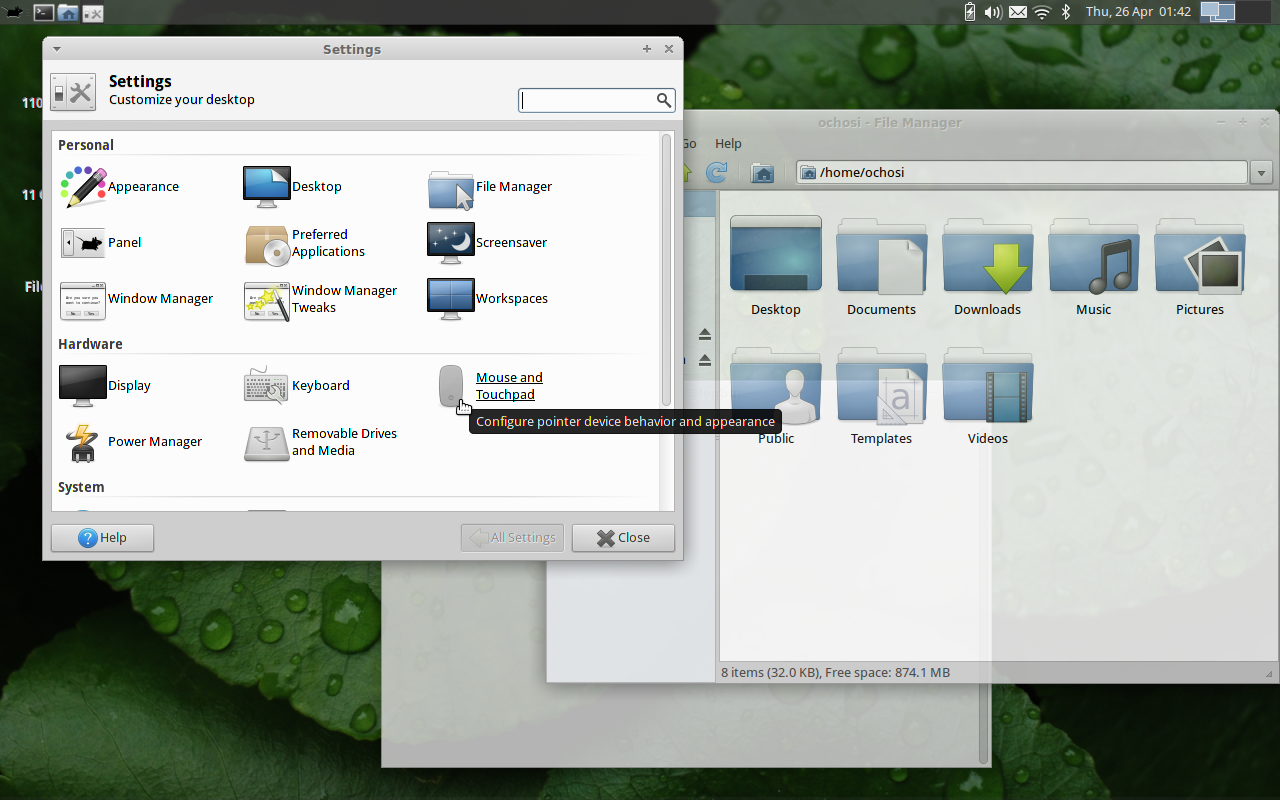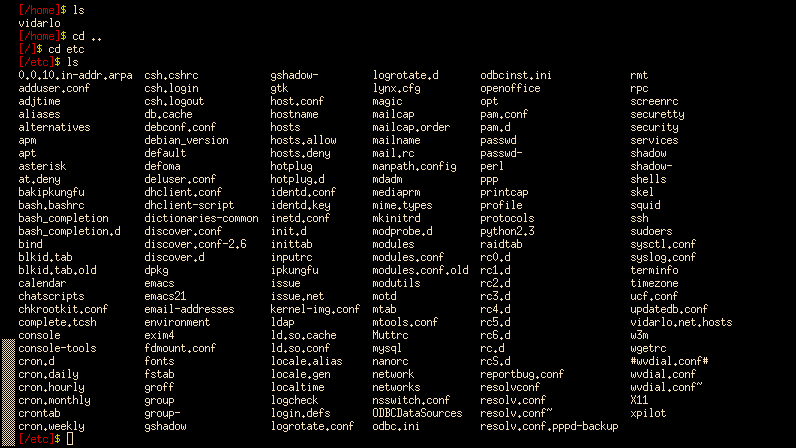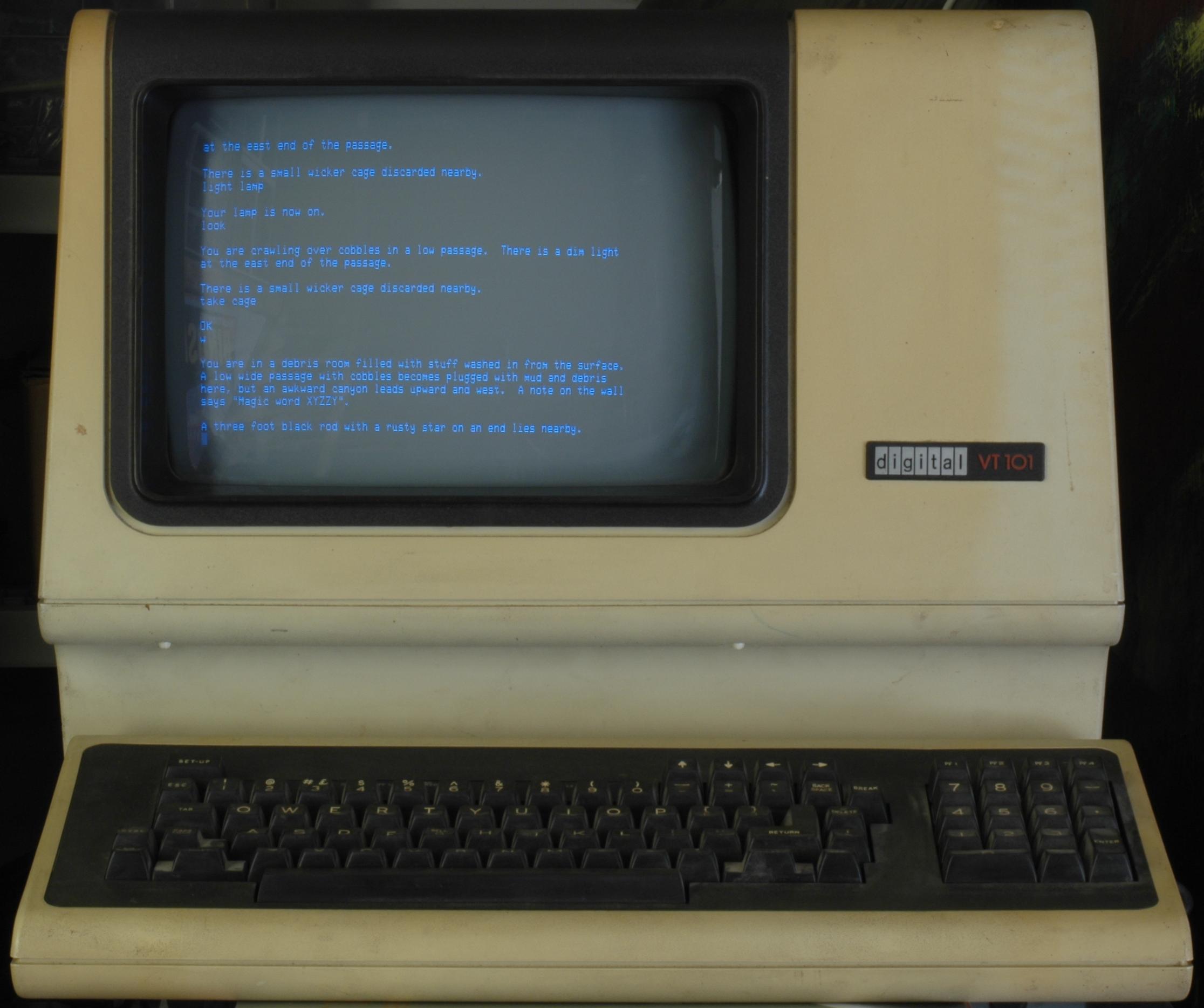|
VT1000
The VT1000 was a monochrome X Window System computer terminal introduced by Digital Equipment Corporation (DEC) in April 1990. The VT1200 replaced the VT1000 later that year, consisting of a code update and a bump in the RAM from 1 to 2 MB. All of the VT1000 series communicated with their host computers over Ethernet, supporting TCP/IP as well as DEC's terminal-oriented Local Area Transport (LAT) protocol. They also included standard serial ports to allow basic terminal emulation, built into the ROM. Apparently unhappy with these VT1000s, DEC released the VT1300 at the same time as the 1200. This was essentially a cut-down diskless version of the VAXstation 3100 Model 30, allowing the X Window System code to be downloaded from the host system. An upgraded version of the VT1300 that allowed the host to download programs to the terminal to run them locally was the VTX2000, a concept DEC called an "X workstation". History Concept The VT1000 family developed out of a 1987 study ... [...More Info...] [...Related Items...] OR: [Wikipedia] [Google] [Baidu] |
VAXstation
The VAXstation is a discontinued family of workstation computers developed and manufactured by Digital Equipment Corporation using processors implementing the VAX instruction set architecture. VAXstation systems were typically shipped with either the OpenVMS or ULTRIX operating systems. Many members of the VAXstation family had corresponding MicroVAX variants, which primarily differ by the lack of graphics hardware. VAXstation 100 The VAXstation 100 is an intelligent graphics terminal (also described as a ''Display subsystem'') introduced by Digital in May 1983 for the VAX-11 line of computers. The VAXstation 100 was Digital's first workstation hardware for the VAX platform; the graphics terminal approach was selected due to the lack of availability of a VLSI VAX CPU necessary to create a standalone VAX workstation when the project began in 1981. The VAXstation 100's design was based on two internal research projects at Digital - a dedicated VAX workstation named ''SUVAX'' (Si ... [...More Info...] [...Related Items...] OR: [Wikipedia] [Google] [Baidu] |
VAXELN
VAXELN (typically pronounced "VAX-elan") is a discontinued real-time operating system for the VAX family of computers produced by the Digital Equipment Corporation (DEC) of Maynard, Massachusetts. As with RSX-11 and VMS, Dave Cutler was the principal force behind the development of this operating system. Cutler's team developed the product after moving to the Seattle, Washington area to form the DECwest Engineering Group; DEC's first engineering group outside New England. Initial target platforms for VAXELN were the ''backplane interconnect'' computers such as the V-11 family. When VAXELN was well under way, Cutler spearheaded the next project, the MicroVAX I, the first VAX microcomputer. Although it was a low-volume product compared with the New England-developed MicroVAX II, the MicroVAX I demonstrated the set of architectural decisions needed to support a single-board implementation of the VAX computer family, and it also provided a platform for embedded system applicatio ... [...More Info...] [...Related Items...] OR: [Wikipedia] [Google] [Baidu] |
OpenVMS
OpenVMS, often referred to as just VMS, is a multi-user, multiprocessing and virtual memory-based operating system. It is designed to support time-sharing, batch processing, transaction processing and workstation applications. Customers using OpenVMS include banks and financial services, hospitals and healthcare, telecommunications operators, network information services, and industrial manufacturers. During the 1990s and 2000s, there were approximately half a million VMS systems in operation worldwide. It was first announced by Digital Equipment Corporation (DEC) as VAX/VMS (''Virtual Address eXtension/Virtual Memory System'') alongside the VAX-11/780 minicomputer in 1977. OpenVMS has subsequently been ported to run on DEC Alpha systems, the Itanium-based HPE Integrity Servers, and select x86-64 hardware and hypervisors. Since 2014, OpenVMS is developed and supported by VMS Software Inc. (VSI). OpenVMS offers high availability through computer cluster, clustering—the ability t ... [...More Info...] [...Related Items...] OR: [Wikipedia] [Google] [Baidu] |
VAXstation 2000
The VAXstation is a discontinued family of workstation computers developed and manufactured by Digital Equipment Corporation using processors implementing the VAX instruction set architecture. VAXstation systems were typically shipped with either the OpenVMS or ULTRIX operating systems. Many members of the VAXstation family had corresponding MicroVAX variants, which primarily differ by the lack of graphics hardware. VAXstation 100 The VAXstation 100 is an intelligent graphics terminal (also described as a ''Display subsystem'') introduced by Digital in May 1983 for the VAX-11 line of computers. The VAXstation 100 was Digital's first workstation hardware for the VAX platform; the graphics terminal approach was selected due to the lack of availability of a VLSI VAX CPU necessary to create a standalone VAX workstation when the project began in 1981. The VAXstation 100's design was based on two internal research projects at Digital - a dedicated VAX workstation named ''SUVAX'' (Si ... [...More Info...] [...Related Items...] OR: [Wikipedia] [Google] [Baidu] |
X Window System
The X Window System (X11, or simply X) is a windowing system for bitmap displays, common on Unix-like operating systems. X originated as part of Project Athena at Massachusetts Institute of Technology (MIT) in 1984. The X protocol has been at version 11 (hence "X11") since September 1987. The X.Org Foundation leads the X project, with the current reference implementation, X.Org Server, available as free and open-source software under the MIT License and similar permissive licenses. Purpose and abilities X is an architecture-independent system for remote graphical user interfaces and input device capabilities. Each person using a networked computer terminal, terminal has the ability to interact with the display with any type of user input device. In its standard distribution it is a complete, albeit simple, display and interface solution which delivers a standard widget toolkit, toolkit and protocol stack for building graphical user interfaces on most Unix-like operating syst ... [...More Info...] [...Related Items...] OR: [Wikipedia] [Google] [Baidu] |
Font
In metal typesetting, a font is a particular size, weight and style of a ''typeface'', defined as the set of fonts that share an overall design. For instance, the typeface Bauer Bodoni (shown in the figure) includes fonts " Roman" (or "regular"), "" and ""; each of these exists in a variety of sizes. In the digital description of fonts ( computer fonts), the terms "font" and "typeface" are often used interchangeably. For example, when used in computers, each style is stored in a separate digital font file. In both traditional typesetting and computing, the word "font" refers to the delivery mechanism of an instance of the typeface. In traditional typesetting, the font would be made from metal or wood type: to compose a page may require multiple fonts from the typeface or even multiple typefaces. Spelling and etymology The word ''font'' (US) or ''fount'' (traditional UK, CAN; in any case pronounced ) derives from Middle French ''fonte'', meaning "cast iron". The term re ... [...More Info...] [...Related Items...] OR: [Wikipedia] [Google] [Baidu] |
User Interface
In the industrial design field of human–computer interaction, a user interface (UI) is the space where interactions between humans and machines occur. The goal of this interaction is to allow effective operation and control of the machine from the human end, while the machine simultaneously feeds back information that aids the operators' decision-making process. Examples of this broad concept of user interfaces include the interactive aspects of computer operating systems, hand tools, heavy machinery operator controls and Unit operation, process controls. The design considerations applicable when creating user interfaces are related to, or involve such disciplines as, ergonomics and psychology. Generally, the goal of user interface design is to produce a user interface that makes it easy, efficient, and enjoyable (user-friendly) to operate a machine in the way which produces the desired result (i.e. maximum usability). This generally means that the operator needs to provide mi ... [...More Info...] [...Related Items...] OR: [Wikipedia] [Google] [Baidu] |
BIOS
In computing, BIOS (, ; Basic Input/Output System, also known as the System BIOS, ROM BIOS, BIOS ROM or PC BIOS) is a type of firmware used to provide runtime services for operating systems and programs and to perform hardware initialization during the booting process (power-on startup). The firmware comes pre-installed on the computer's motherboard. The name originates from the Basic Input/Output System used in the CP/M operating system in 1975. The BIOS firmware was originally proprietary to the IBM PC; it was reverse engineered by some companies (such as Phoenix Technologies) looking to create compatible systems. The interface of that original system serves as a ''de facto'' standard. The BIOS in older PCs initializes and tests the system hardware components ( power-on self-test or POST for short), and loads a boot loader from a mass storage device which then initializes a kernel. In the era of DOS, the BIOS provided BIOS interrupt calls for the keyboard, display, st ... [...More Info...] [...Related Items...] OR: [Wikipedia] [Google] [Baidu] |
VT52
The VT50 is a CRT-based computer terminal that was introduced by Digital Equipment Corporation (DEC) in July 1974. It provided a display with 12 rows and 80 columns of upper-case text, and used an expanded set of control characters and forward-only scrolling based on the earlier VT05. DEC documentation of the era refers to the terminals as the DECscope, a name that was otherwise almost never seen. The VT50 was sold only for a short period before it was replaced by the VT52 in September 1975. The VT52 provided a screen of 24 rows and 80 columns of text and supported all 95 ASCII characters as well as 32 graphics characters, bi-directional scrolling, and an expanded control character system. DEC produced a series of upgraded VT52s with additional hardware for various uses. The VT52 family was followed by the much more sophisticated VT100 in 1978. Description These terminals supported asynchronous communication at baud rates up to 9600 bits per second and did not require ... [...More Info...] [...Related Items...] OR: [Wikipedia] [Google] [Baidu] |
Terminal Emulator
A terminal emulator, or terminal application, is a computer program that emulates a video terminal within some other display architecture. Though typically synonymous with a shell or text terminal, the term ''terminal'' covers all remote terminals, including graphical interfaces. A terminal emulator inside a graphical user interface is often called a terminal window. A terminal window allows the user access to a text terminal and all its applications such as command-line interfaces (CLI) and text user interface (TUI) applications. These may be running either on the same machine or on a different one via telnet, ssh, dial-up, or over a direct serial connection. On Unix-like operating systems, it is common to have one or more terminal windows connected to the local machine. Terminals usually support a set of escape sequences for controlling color, cursor position, etc. Examples include the family of terminal control sequence standards that includes ECMA-48, ANSI X3.64, ... [...More Info...] [...Related Items...] OR: [Wikipedia] [Google] [Baidu] |
VT100
The VT100 is a video terminal, introduced in August 1978 by Digital Equipment Corporation (DEC). It was one of the first terminals to support ANSI escape codes for cursor control and other tasks, and added a number of extended codes for special features like controlling the status lights on the keyboard. This led to rapid uptake of the ANSI standard, which became the de facto standard for hardware video terminals and later terminal emulators. The VT100 series, especially the VT102, was extremely successful in the market, and made DEC the leading terminal vendor at the time. The VT100 series was replaced by the VT200 series starting in 1983, which proved equally successful. Ultimately, over six million terminals in the VT series were sold, based largely on the success of the VT100. Description DEC's first video terminal was the VT05 (1970), succeeded by the VT50 (1974), and soon upgraded to the VT52 (1975). The VT52 featured a text display with 80 columns and 24 rows, bidire ... [...More Info...] [...Related Items...] OR: [Wikipedia] [Google] [Baidu] |






